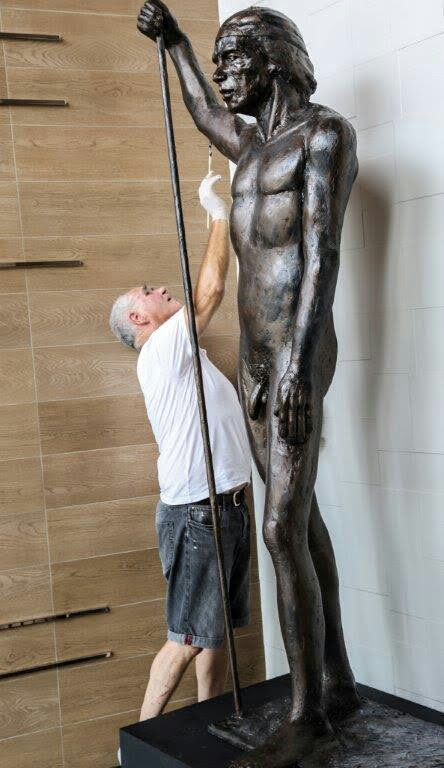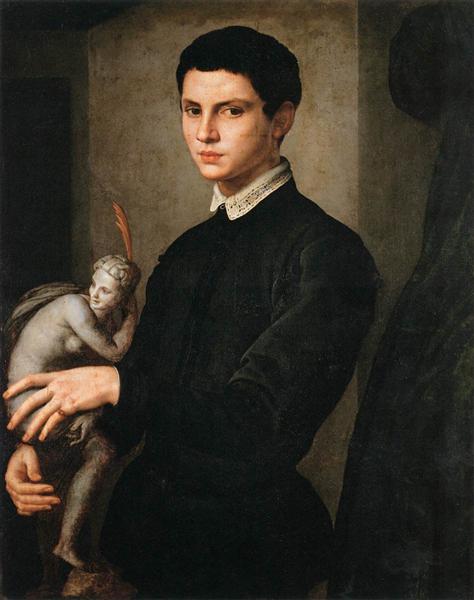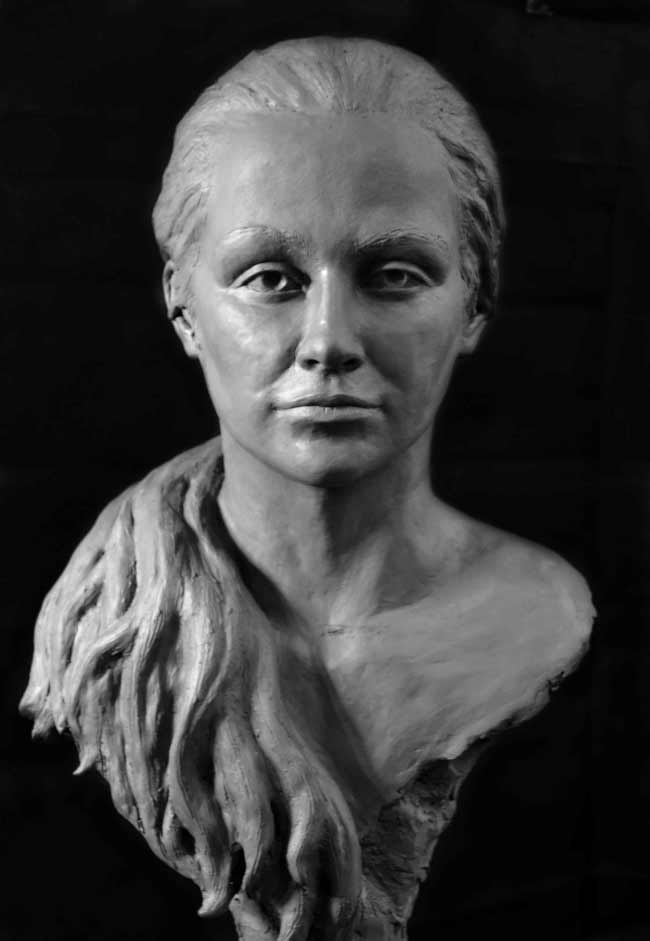Crafting Expressions: The Unique Artistry of a Portrait Sculptor
Wiki Article
The Development of Sculptures: From Ancient to Modern
The Advancement of Sculptures: From Ancient to Modern.Sculpture, one of the oldest kinds of art, has actually been an important component of human people for millennia (Robert C Hitchcock Sculptor). From the ancient civilizations of Egypt and Greece to the modern-day age, sculptures have actually evolved, showing adjustments in artistic techniques, materials, and social impacts. This trip with time traces the advancement of sculptures, discovering the shifts stylishly, subject, and artistic expression
Beginning with the ancient globe, sculptures crafted from rock and later on bronze recorded the essence of deities, leaders, and day-to-day life. The Renaissance duration experienced a rebirth of classical sculpting strategies, as musicians looked for to imitate the elegant kinds of old Greek and Roman sculptures. In the contemporary age, artists tested traditional limits, welcoming abstraction and experimentation with new products.

This expedition will explore the varied advancement of sculptures, disclosing the rich tapestry of imaginative expression across various periods and societies.
Old Sculptures: From Stone to Bronze
Old sculptures transitioned from being carved out of stone to being cast in bronze. This shift noted a considerable evolution in the art of sculpture, permitting greater improvement and information in the finished jobs. Rock sculptures, while outstanding in their very own right, were limited by the nature of the product. Rock required comprehensive shaping and sculpting, typically causing a much more streamlined representation of the subject.The intro of bronze as a medium for sculptures produced a revolution in creative expression. Bronze supplied sculptors the chance to develop realistic and detailed forms that were not possible with stone. The process of casting bronze enabled for the production of multiple copies of a sculpture, allowing bigger distribution and conservation of these imaginative masterpieces.
The transition from stone to bronze additionally saw a shift in the subject of sculptures. While stone sculptures mainly shown gods, goddesses, and mythological numbers, bronze sculptures started to mirror a broader range of topics, consisting of everyday people and animals. This growth of subject showcased the flexibility and flexibility of the bronze tool.
Renaissance Rebirth: Forming in the Timeless Design
The Renaissance revival of sculpture experienced a rebirth in the timeless design, structure upon the advancements made throughout the transition from rock to bronze in old sculptures. Throughout this duration, musicians looked for to recreate the timeless aesthetic and suitables of elegance that prevailed in old Greek and Roman sculptures.Among the crucial attributes of the Renaissance resurgence was the emphasis on naturalism and the human kind. Artists like Donatello and Michelangelo aim to capture the anatomical details and expressions of their subjects with unmatched precision. They researched the human body and incorporated their monitorings right into their sculptures, leading to realistic and realistic depictions.
One more essential aspect of the Renaissance rebirth was the exploration of viewpoint and deepness. Musicians utilized techniques such as contrapposto, where the weight of the body is moved to one side, developing a sense of movement and dynamism. They likewise try out various materials, consisting of marble and bronze, to accomplish a level of refinement and ins and out in their sculptures.
The classical style of the Renaissance revival had an extensive impact on later periods of art, acting as a structure for the advancement of Western sculpture. It brought a renewed gratitude for the beauty and magnificence of the human form, and its tradition can still be seen in modern sculptures today.
Modernism and the Avant-Garde: Breaking Standard Borders

Among the key features of modernist sculpture was the focus on abstraction. Sculptors relocated far from practical representations and rather concentrated on capturing the essence of the topic with simplified kinds and geometric forms. This departure from traditional representation allowed musicians to share their emotions and concepts in a more subjective and individual way.
Additionally, the progressive motion tested societal standards and conventions, urging musicians to experiment and press the borders of their art - Bronze Sculptures. Sculptors began including unique products such as found things, commercial materials, and also natural aspects into their job. This exploration of new products and techniques not only expanded the possibilities for sculpture but also tested the typical concepts of what might be taken into consideration art
Contemporary Sculptures: Checking Out New Products and Concepts
With an emphasis on exploring brand-new materials and principles, contemporary sculptures have actually reinvented the area of art. Artists today are pushing the boundaries of typical sculpture by utilizing cutting-edge products and exploring with abstract ideas. These sculptures challenge conventional concepts of materiality, significance, and form, inviting viewers to take part in a thought-provoking and brand-new imaginative experience.Contemporary sculptors are welcoming a variety of materials, including plastic, glass, steel, and also organic matter. Bronze Sculptures. They are not restricted to the traditional medium of stone or clay, enabling greater freedom of speech and testing. This change towards unique products has opened up brand-new possibilities for artists to produce sculptures that are vibrant, interactive, and aesthetically striking
In enhancement to exploring brand-new products, modern sculptures additionally explore complicated and abstract ideas. Musicians are currently discovering styles such as identification, social issues, and the environment, utilizing sculpture as a powerful medium for social commentary and self-questioning. These sculptures test visitors to assume seriously and involve with art on a much deeper degree, stimulating conversations and prompting psychological feedbacks.
International Influences: Sculptural Traditions From Around the World

In old Egypt, sculptures were produced mainly for religious and funerary purposes. The iconic sculptures of pharaohs and gods, such as the Great Sphinx and the bust of Queen Nefertiti, display the Egyptians' mastery of stone carving and their belief in the afterlife.
In old Greece, sculpture reached its top during the classical period. Influenced by the ideals of harmony, proportion, and appeal, Greek sculptures stressed the human form and celebrated the achievements of gods, professional athletes, and heroes. The popular sculptures of Aphrodite of Knidos and the Discobolus exemplify the Greeks' quest of perfection in sculptural art.
In old Rome, sculpture served both political and creative functions. Contemporary Sculptures. Roman sculptures commonly portrayed emperors, generals, and mythological numbers, mirroring the power and majesty of the realm. The marble statue of Augustus of Prima Porta and the huge Arch of Constantine are notable instances of Roman sculptural success
Oriental sculptural Full Report traditions, specifically in India, China, and Japan, have likewise had an extensive effect on the advancement of sculptures. Indian sculptures, such as the delicately carved holy places of Khajuraho and the gigantic statuaries of Buddha, display an abundant fusion of spiritual, mythological, and building elements. Chinese sculptures, defined by their fine craftsmanship and attention to detail, usually depict divine beings, pets, and fabulous figures. Japanese sculptures, influenced by Buddhism, emphasize simplicity and serenity, seen in the tranquil sculptures of Buddha and the elegant art of bonsai.
The worldwide impacts on sculpture continue to progress in the modern age. As we look to the future, it is specific that the international influences on sculpture will certainly proceed to form and redefine this ancient art type.
Final Thought
In verdict, the advancement of sculptures has actually seen a change from ancient stone and bronze functions to the classic resurgence throughout the Renaissance. Today, modern sculptures check out new products and principles, while likewise drawing inspiration from global sculptural practices - Robert C Hitchcock Sculptor.From the old civilizations of Egypt and Greece to the contemporary period, sculptures have actually developed, showing adjustments in imaginative techniques, materials, and cultural influences.Starting with the old world, sculptures crafted from stone and later on bronze recorded the essence of deities, rulers, and everyday life.Ancient sculptures transitioned from being carved out of stone to being cast in bronze. While stone sculptures mainly shown gods, sirens, and mythical numbers, bronze sculptures began to show a more comprehensive array of topics, consisting of day-to-day individuals and pets.In conclusion, the evolution of sculptures has seen a shift from ancient rock and bronze functions to the timeless rebirth throughout the Renaissance.
Report this wiki page